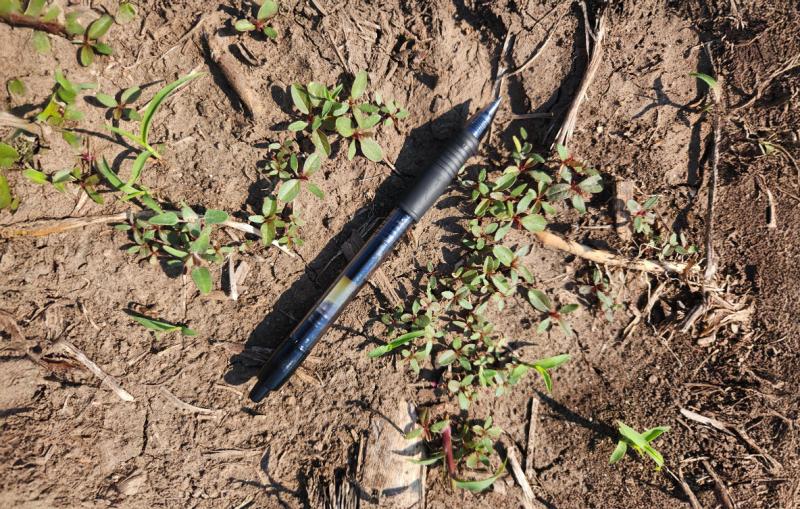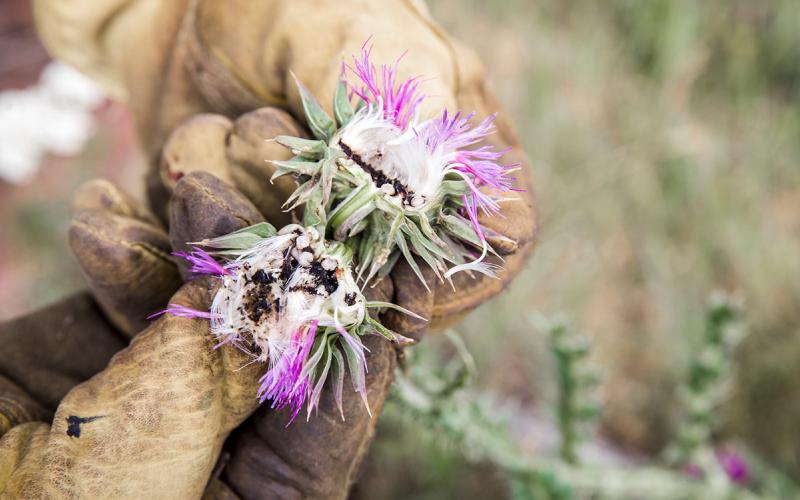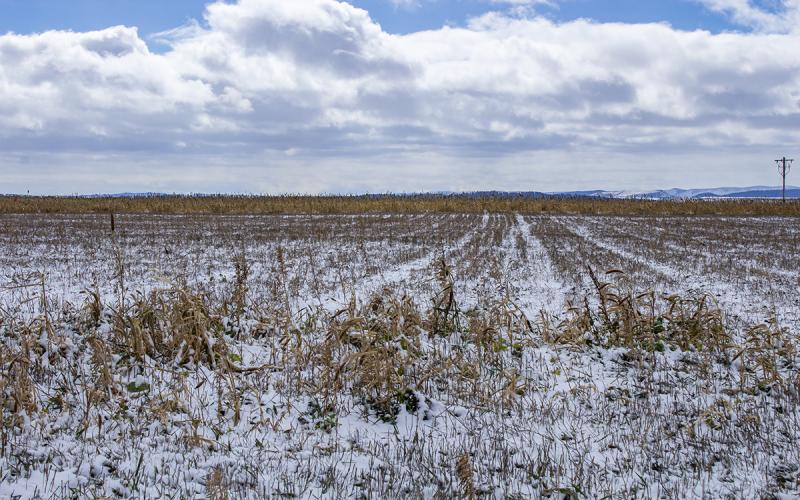Written collaboratively by Eric Jones, Philip Rozeboom, Jill Alms, and David Vos.
Waterhemp has started to emerge across South Dakota. Plants as of this writing (June 4, 2025) are still small: cotyledon to 1-leaf stage (Figure 1). While the plants are small now, recent rain events and forecasted warmer air temperatures are ideal for waterhemp growth. Under ideal conditions, waterhemp can grow 0.5 to 1 inch per day. Therefore, if waterhemp plants have just emerged and conditions are ideal, plants can reach 4 inches in height within a week. Since 4 inches in height is the ideal time to spray with an herbicide, the window for a timely application will likely be short.

Effective herbicides for waterhemp management in row crops can be found in the latest South Dakota Pest Management Guides. Additionally, objective weed control data can be found with in the latest Weed Control Field Test Data to make informed decisions about herbicide programs to be sprayed in various crops. Despite what herbicide(s) are selected, there are a few considerations that can improve waterhemp management.
Tank Mixtures
Weed management effectiveness with postemergence herbicides usually increases when two herbicides are applied together. Choosing two unique herbicides to be applied increases the spectrum of control (i.e., controlling both broadleaf and grass weeds) and the level of control (i.e., 85% vs 95%). A detailed example of how herbicide tank mixtures improve waterhemp and other weed management can be found in the publication, 2,4-D (Enlist One) and Glufosinate (Liberty) Additively Control Common Weeds in South Dakota Soybean Production. Another important aspect of herbicide tank mixtures is the reduced selection pressure on herbicide-resistant weeds.
Residual Herbicides
Preemergence herbicide applications should be a staple of a weed management plan. However, residual herbicides also have a place in a postemergence application. The residual herbicides applied postemergence will not have activity on emerged weeds but will kill the later emerging weed seeds. Waterhemp will have several germination events throughout a growing season; therefore, there is great importance to minimize the amount of successful germination of plants. Later emerging plants will not likely reduce yield, but harvest efficiency can be reduced if many waterhemp plants are present. The minimization of later emerging waterhemp plants decreases the amount of seeds produced and returned to the soil seedbank.
Tactics Outside of the Nozzle
While herbicides are likely the most efficient and effective tactics for weed management,other non-chemical tactics can be used as well. While not feasible in no-till areas, interrow cultivation can be effective to manage small (2 inches or less) waterhemp plants. Fertilization can stimulate waterhemp germination to deplete the soil seedbank. Field trials from the Extension Weed Science project at South Dakota State University has shown that 50 lbs of nitrogen per acre can increase waterhemp germination two-times as much as non-fertilized areas. Side dressing corn may provide an opportunity to deplete the waterhemp seedbank but be prepared to manage the potential large amount of waterhemp that will germinate! Small, isolated patches that were missed with an herbicide application or later emerging can be hand weeded or mowed. These non-chemical tactics can be coupled with herbicides to increase the effectiveness of waterhemp management.


